Yes, you can mix wood and white trim in the same house (or, even, in the same room)! Mixing painted and stained trim is completely doable, as long as you keep these tips in mind.
Our modern cottage home has original solid wood trim, crown molding, panel molding, chair rails, and ceiling beams… but… it’s only like that in a few of the main rooms. The remaining spaces are filled with the same 3″ stained baseboards that fills most homes built in the 1980s.
So, what do you do when some of your home’s trim is high quality and the rest is builder grade? Does it all have to be upgraded ($$$)? Or, do you have to paint it all white (bye-bye beautifully stained original wood)?
Is it all or nothing?
The answer is a resounding “no”.
Not only can you mix wood and white trim, you can also mix stained trim with painted trim of any color. Mixing trim is not as easy as “all or nothing”, but the results are well worth the extra effort (and, it might save you some money, too!).
How to Combine Stained and Painted Trim
1. Decide which Trim will be Stained
First, determine which trim, moldings, and casings will remain in a stained finish (i.e. will not be painted). To make this decision, ask yourself the following questions:
- Do I like this feature of my home in a stained finish?
- Is this trim made with quality wood?
- Does this trim make a statement in my home?
- Is this trim in good condition?
- Does this stained trim work with the “mood” I’d like to create in this room?
Save Your Favorite Ideas & Get Updates
- Save your favorite content (from my site and thousands of other sites including: home, DIY, craft, recipe, and travel blogs)
- Receive my weekly newsletter
- Gain access to my Freebie Library
2. Decide which Trim will be Painted
Next, determine which trim, moldings, and casings will be painted. To make this decision, ask yourself the following questions:
- Which wood-stained features do I dislike?
- Is this trim made with inexpensive wood?
- Does this trim distract from other appealing features of my home?
- Is this trim in poor condition?
3. Determine the Start and Endpoints
The trickiest part of mixing stained and painted trim is the start and endpoints. What do I mean by start and endpoints? Well, for example, this question:
“If I paint the baseboards white, should I also paint the stained door casing which opens to the next room?”
This isn’t always easy to solve. In fact, in several rooms, I have painted trim up to a certain point and then stopped to mull it over for a while. I’m a visual person, and seeing it in real life helps me make the final decision.
My general rule regarding where to start and to end is this: keep each type of trim consistent within a room (with the exception of window and door casing trim). For example:
- all baseboard in a room is the same color,
- all crown in a room the same color,
- etc.
4. Decide whether each Window Casing will be Painted or Stained
So, do the window casings have to match the crown molding… or the baseboards… or the other windows in the room? Nope!
Rather, for window casing trim, choose stained or painted based on the following criteria:
- if you want windows to feel bigger, choose a low contrast trim color (see image #1, below)
- if you want to highlight windows, choose a high contrast trim color (see image #2, below)
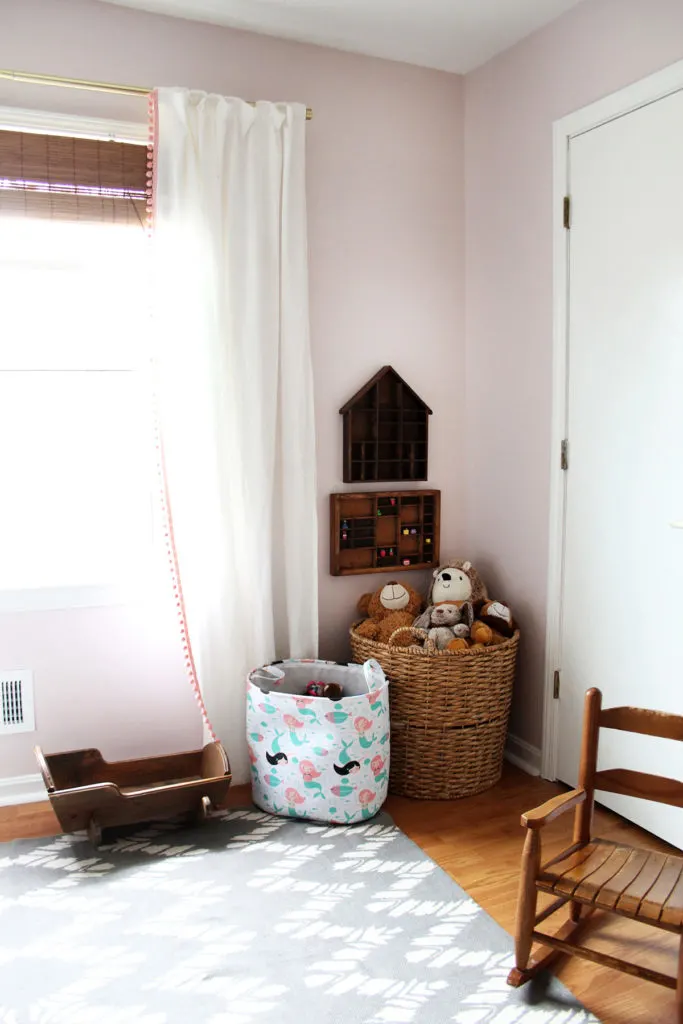
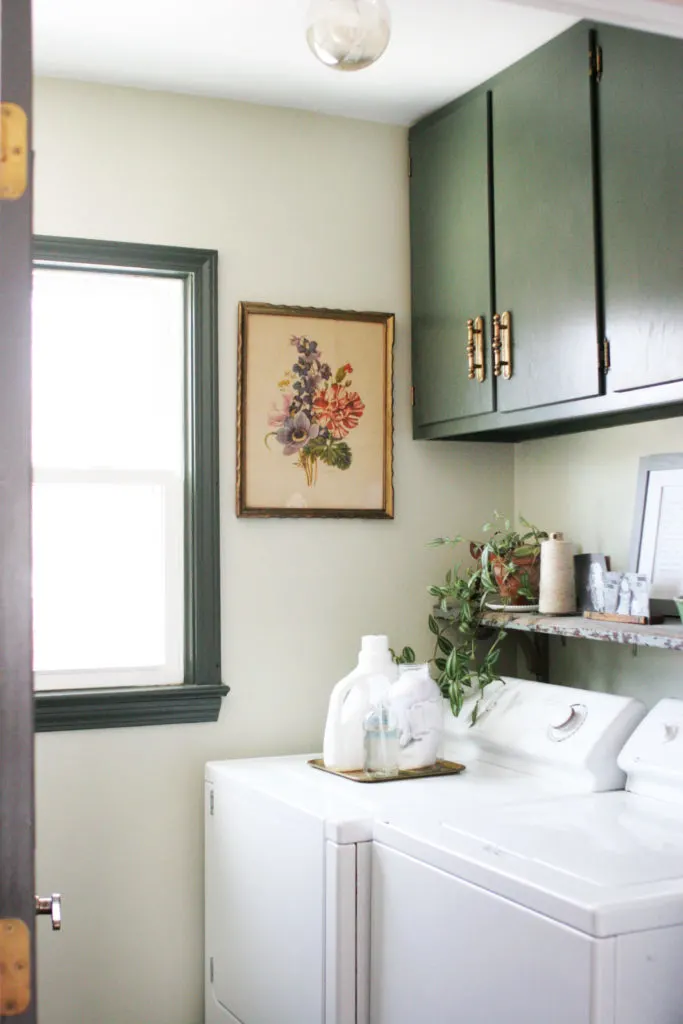
5. Decide whether each Door Casing will be Painted or Stained
Like window casings, door casing trim can also vary within a room.
For door casing trim, choose stained or painted based on the look you want AND the impact on the adjoining room, for example:
- if there is a door, you can finish it in one color to the stop in the door frame and another color past that point (see image #1, below)
- if a cased opening does not contain a door (i.e. a pass-through), paint it all or stain it all based on which is most visually appealing (see images #2 and #3, below)
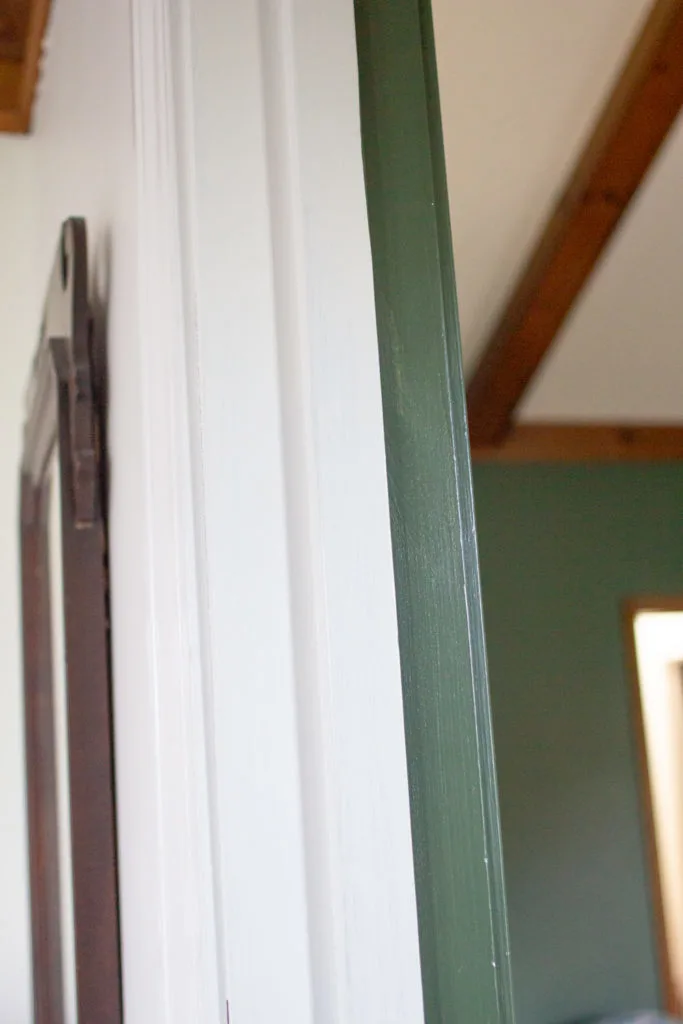
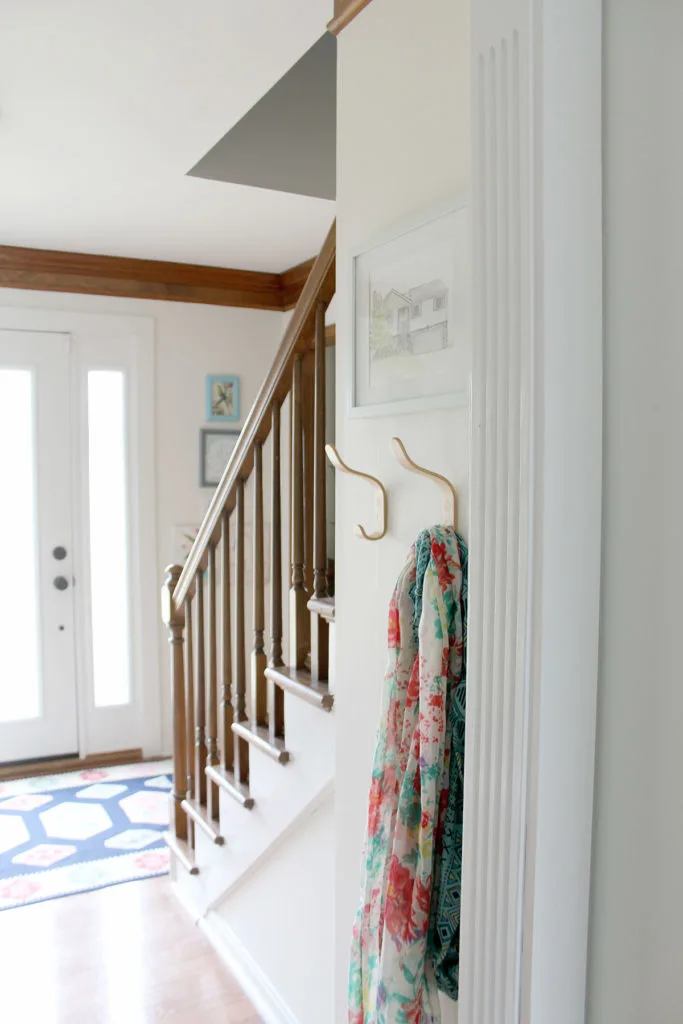
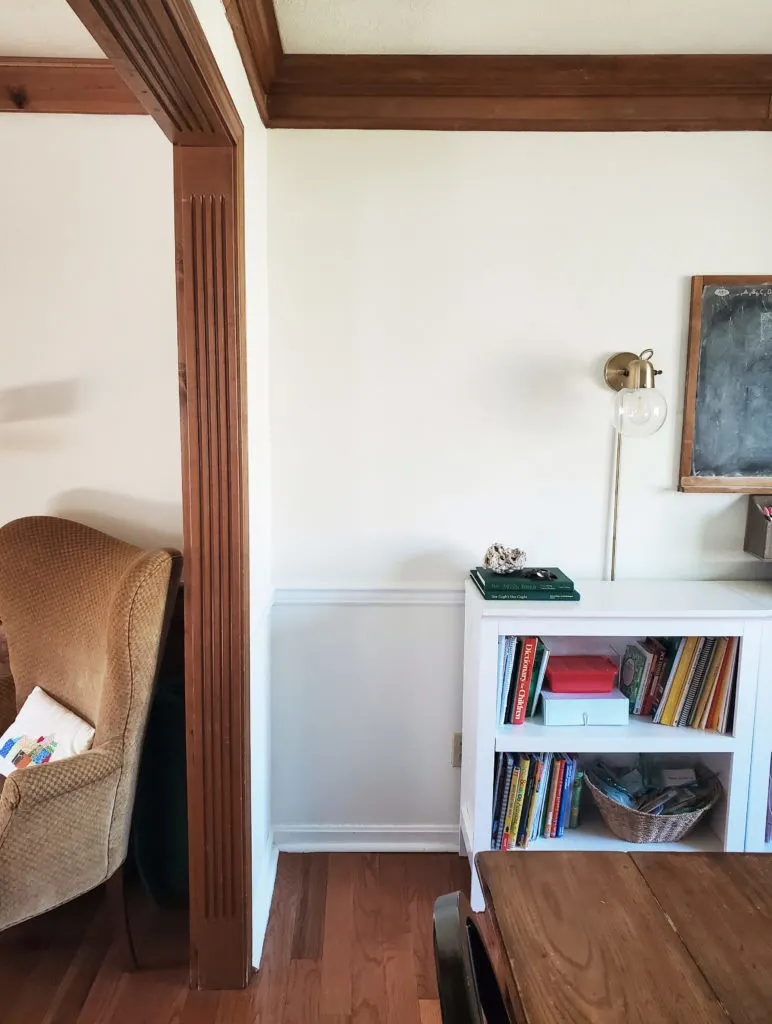
6. Decide whether Doors will be Painted or Stained
If you have a door between rooms, you’ll have to decide whether the door will be stained or painted to match the trim. Just like all trim doesn’t have to match, doors don’t always have to match the trim, either.
In general, you have 4 choices:
- painted door with painted trim
- stained door with painted trim
- stained door with stained trim
- stained door on one side, painted door on the other side
Typically, I don’t recommend the last option. In this post about How to Mix Wood Stained Doors with White Trim, I explain how to decide between the other 3 options.
Examples of Mixing Wood and Painted Trim
Dining Room with Wood and White Trim
For the first example, let’s take a look at our homeschool room (also a dining room). I wanted the room to feel light and bright… after all light is imperative in a space for schoolwork.
When we moved in, the crown molding, window trim, chair rail, and baseboards were all stained wood. All that wood trim – combined with blue-gray walls – wasn’t adding up to the light and bright space I envisioned.
But, I hated to paint over that gorgeous, thick, stained wood crown molding. How could I lighten up the room without hiding a feature that I loved?
You might also like: How to Brighten a Dark Room
So, I decided to try mixing wood and white trim in the same room (prior to this, I’d only mixed it in the same house). We painted the walls in SW Alabaster and the trim in SW Pure White (to match the adjoining budget-friendly kitchen renovation).
It turned out exactly as I’d hoped! The beautiful crown molding is highlighted because all of the smaller 3″ trim blends in with the walls.
Bedroom with Stained and Painted Trim
For the next example, let’s take a look at our master bedroom. We wanted this room to feel cozy, warm, and a bit rustic. It’s a big room that can handle a deep, dark, paint color and heavy trim.
Plus, the wood beams are the statement piece in this room and I definitely wouldn’t want them to fade away with white paint.
However, I wasn’t interested in updating the inexpensive baseboards with similar trim to match the ceiling. It would be expensive and difficult to match the stains.
Instead, we chose to replace the 3″ baseboards with paintable 1″ x 6″ boards. I painted the boards with SW Rookwood Dark Green (at 50%) – to match the dark green bedroom walls – which keeps the base trim from competing visually with the ceiling beams and trim.
Plus, I love how the dark green trim contrasts with the grasscloth-covered wall, while also complementing the green curtains (here are 9 more examples of rooms with painted green trim).
Tips & Tricks for Painting Stained Trim
- Use a high-quality semigloss paint, preferably with primer built-in. I like Sherwin William’s Emerald Urethane Trim Paint for both trim and cabinetry.
- If your home is older (pre-1978), there is a possibility that there could be lead in the stain, varnish, or original paint. You can buy a lead test kit to confirm the existence of lead. Then, use a lead encapsulating paint as a primer/barrier before painting the trim.
Mix Wood and Painted Trim
Now it’s your turn! Embrace the stained trim in your home by making creative choices with trim color.
Have questions? Feel stuck? Leave a comment, below. I’d love to help you figure out how to beautifully combine stained and painted trim in your home!

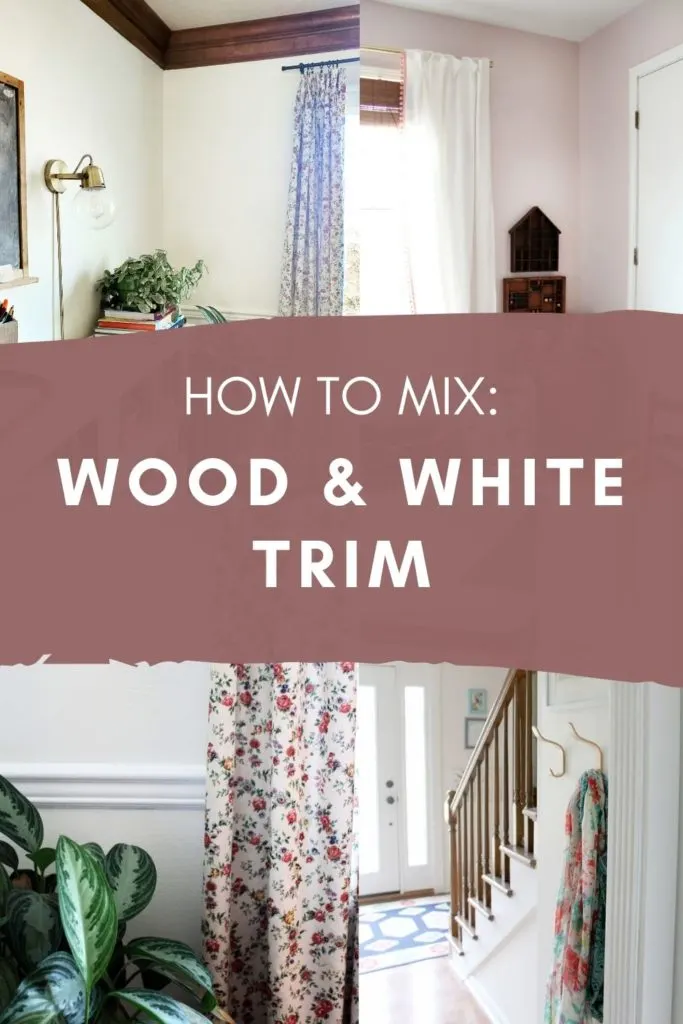
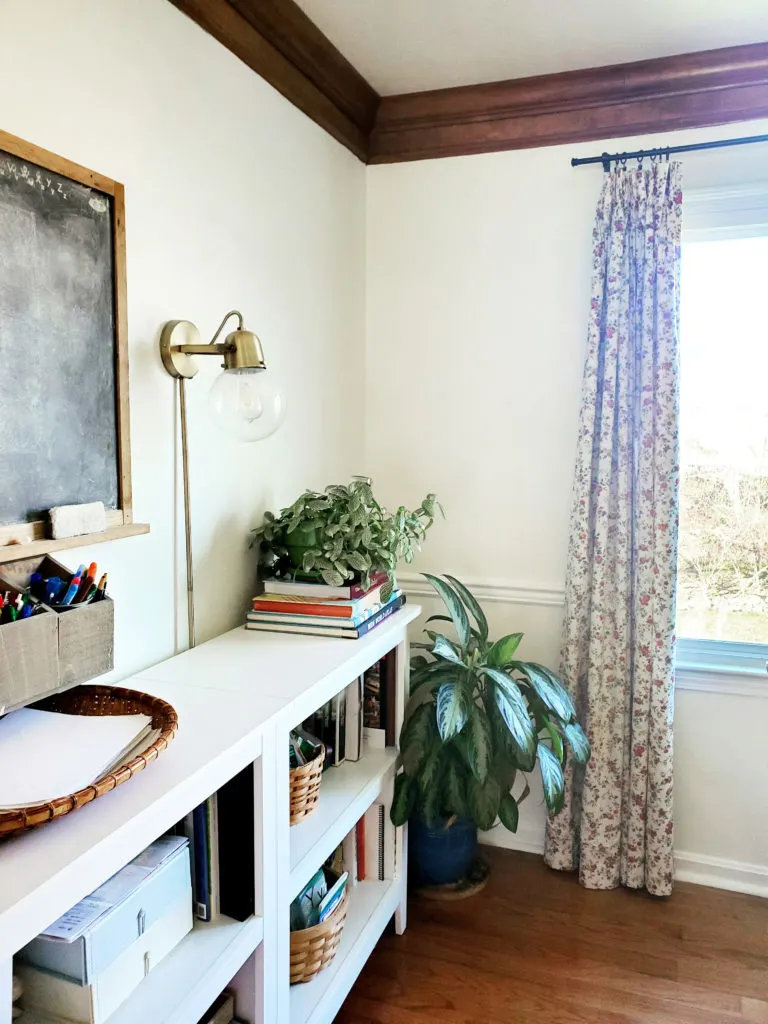
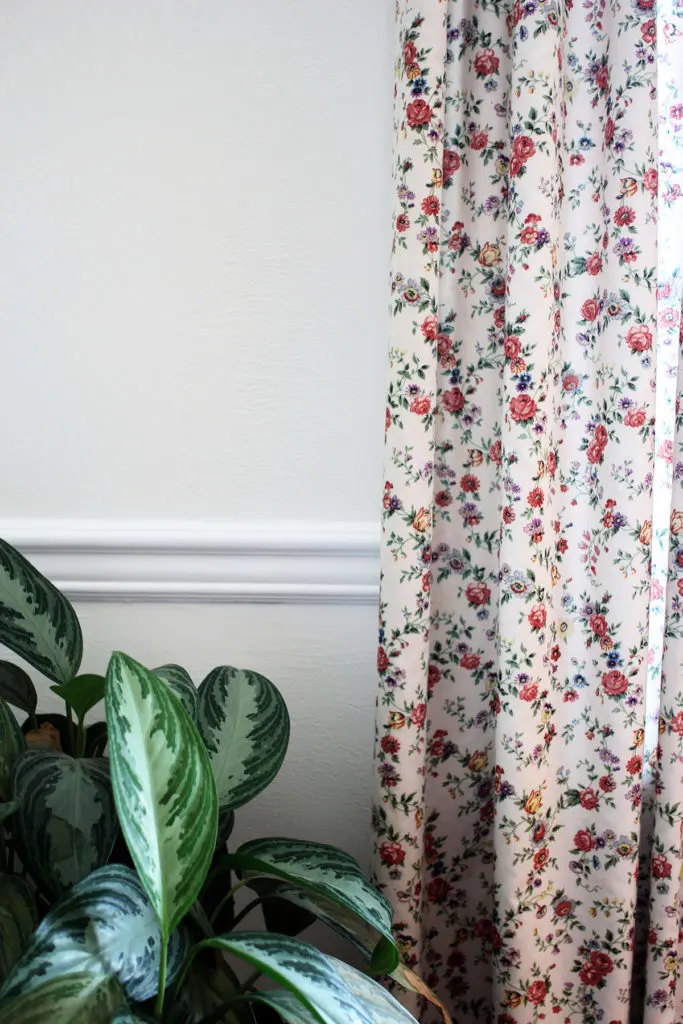
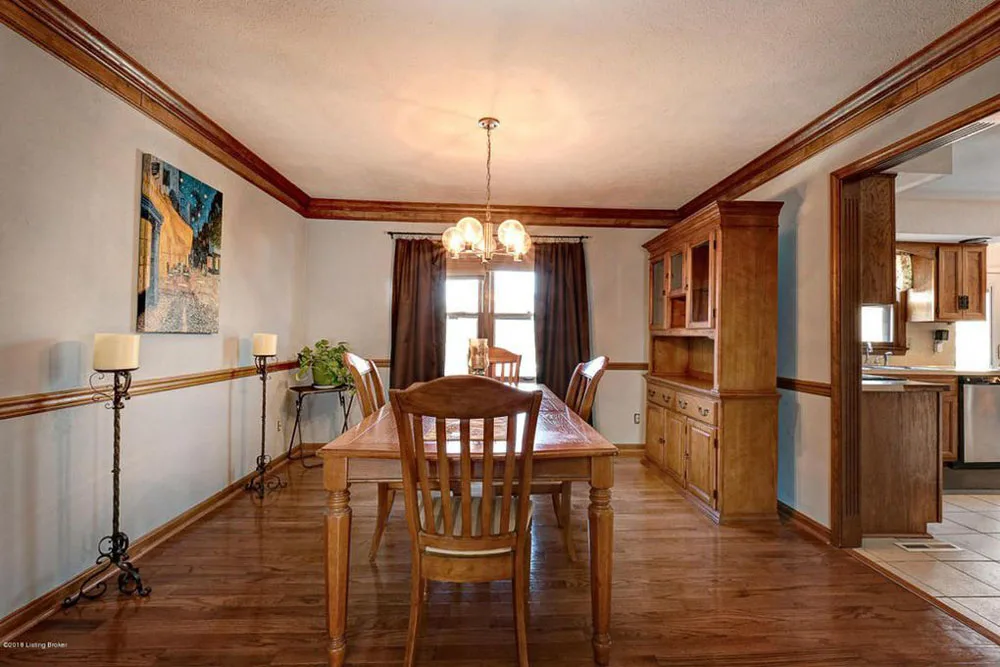

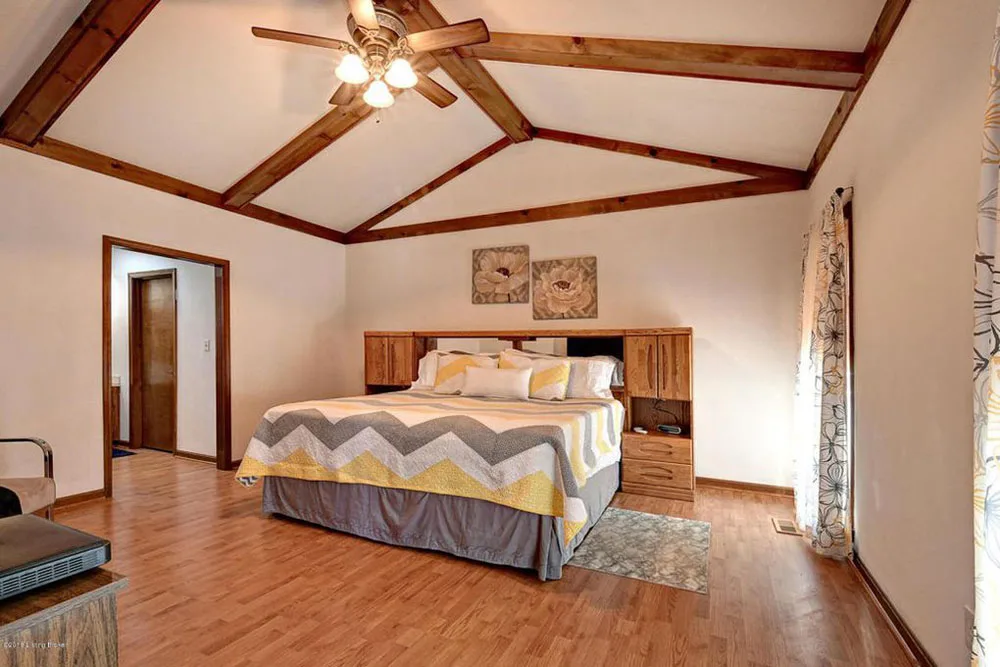
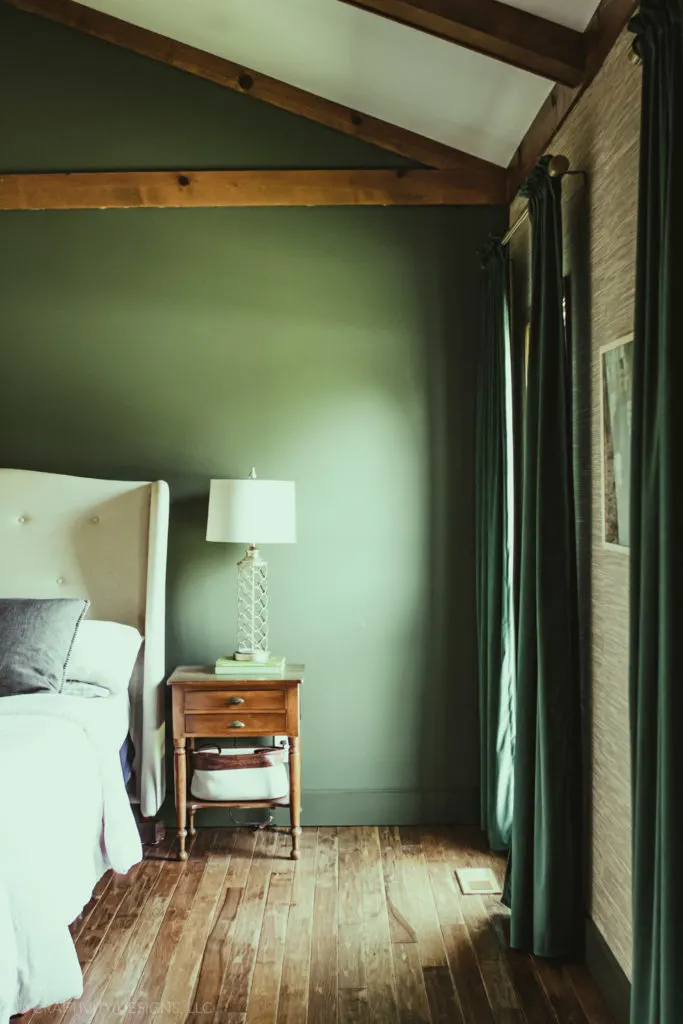
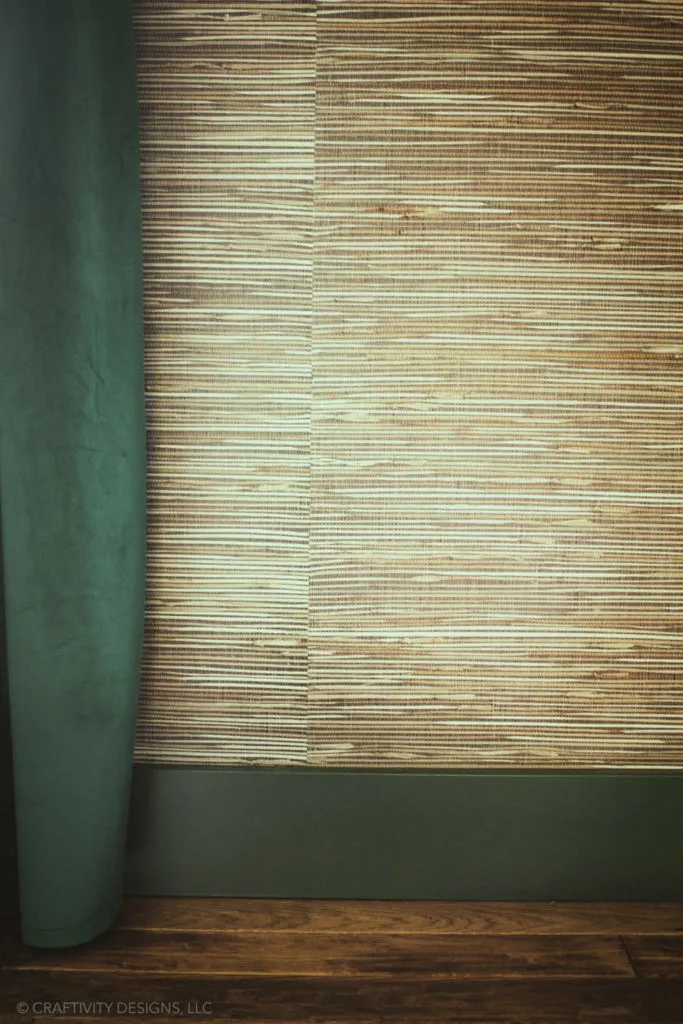
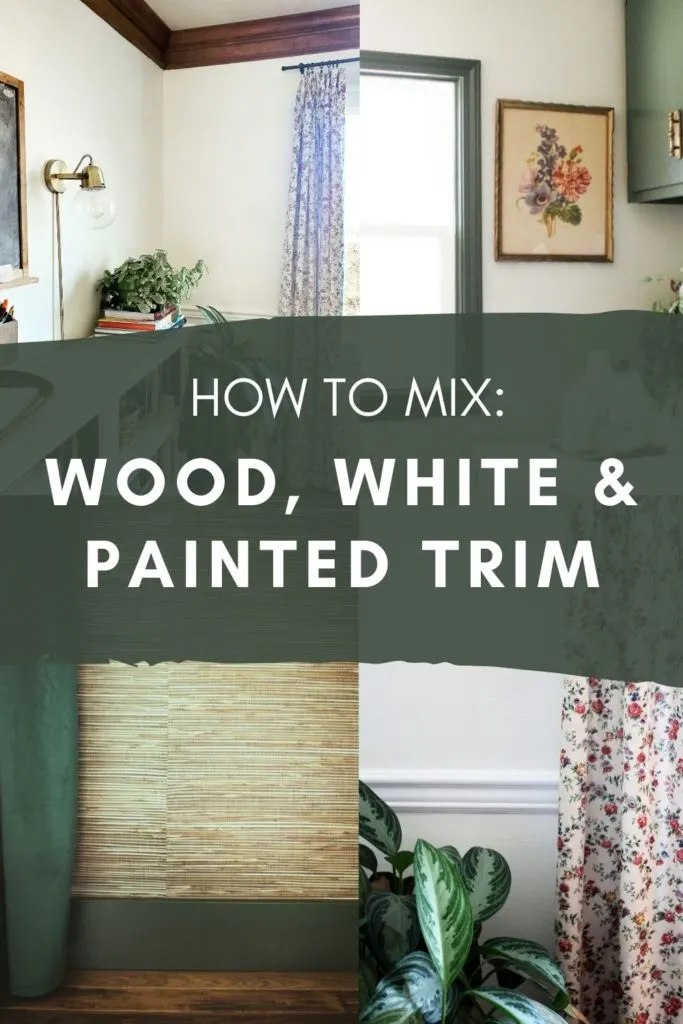
Jeanne
Tuesday 25th of March 2025
I have an old pass through that has been drywall’s on one side. I want to put a wider shelf on the bottom with two more narrow shelves above( these two would be the width of the wood work surrounding the pass through). All the wood work in the house is stained medium oak. I would like this new shelf to be painted a lighter color on an accent wall instead of being stained medium oak. Would that look ok ?
Lora Green
Monday 7th of April 2025
Yes, definitely! Painting a shelf to mix with with the stained woodwork is a great way to mix painted/stained wood seamlessly!
Vicki Briggs
Tuesday 24th of December 2024
We have natural wood barn doors and floor tim to match...floor is a dark grey/brown that looks like old boards...thinking of painting window sills charcoal...walls are white..im going to paint exterior of the hoyse charcoal and front door black..whats your thoughts?
Lora Green
Tuesday 7th of January 2025
That sounds lovely!! I'd love to see before and after pics, if you want to share :)
Marla
Saturday 3rd of August 2024
We recently got new windows and I wanted to change the trim to more of a farmhouse look. We stained the trim Ipswich pine. We love how they are the focal point. I want to change out my doors in the house too as I hate the 6 panel doors. Going with 2 panel. I want to stain those and change the trim to a more farmhouse style. I just don't know what to do with the baseboards. They are picked up do to dogs. I want to replace them to match the 1x4 trim we are using. Would it look stupid to paint them white? Our rooms are painted with earth tone colors, we have wood floors through out the house except in the two bedroom.
Lora Green
Friday 16th of August 2024
If you are consistent with the color selections (stained window trim and door trim, doors all the same color, base trim all white), I think it will look lovely and intentional! Sounds very pretty :)
Tim Weaver
Thursday 16th of May 2024
We have a LOT of honey oak. All the trim, floors, most doors and casings. My question is would it look ok to paint the risers and stairway trim white even though the rest of the home trim is honey oak
Lora Green
Saturday 1st of June 2024
Yes, definitely! This is a great way to mix wood stain and white.
Kacie
Tuesday 2nd of April 2024
I have a dining room with beautiful 4-inch stained wood trim and casings. I want to add a chair rail and paint the walls and add wallpaper. Do you think that the chair rail could be white or moss green (the color of the walls)? I think it will be almost impossible to stain the rail to match the rest of the wood. Will it look weird to have the chair rail painted and all the rest of the wood stained?
Lora Green
Monday 6th of May 2024
Yes! Definitely paint the chair rail to match the walls. Do use a semi-gloss on the chair rail though, even if you use an eggshell or satin on the walls.